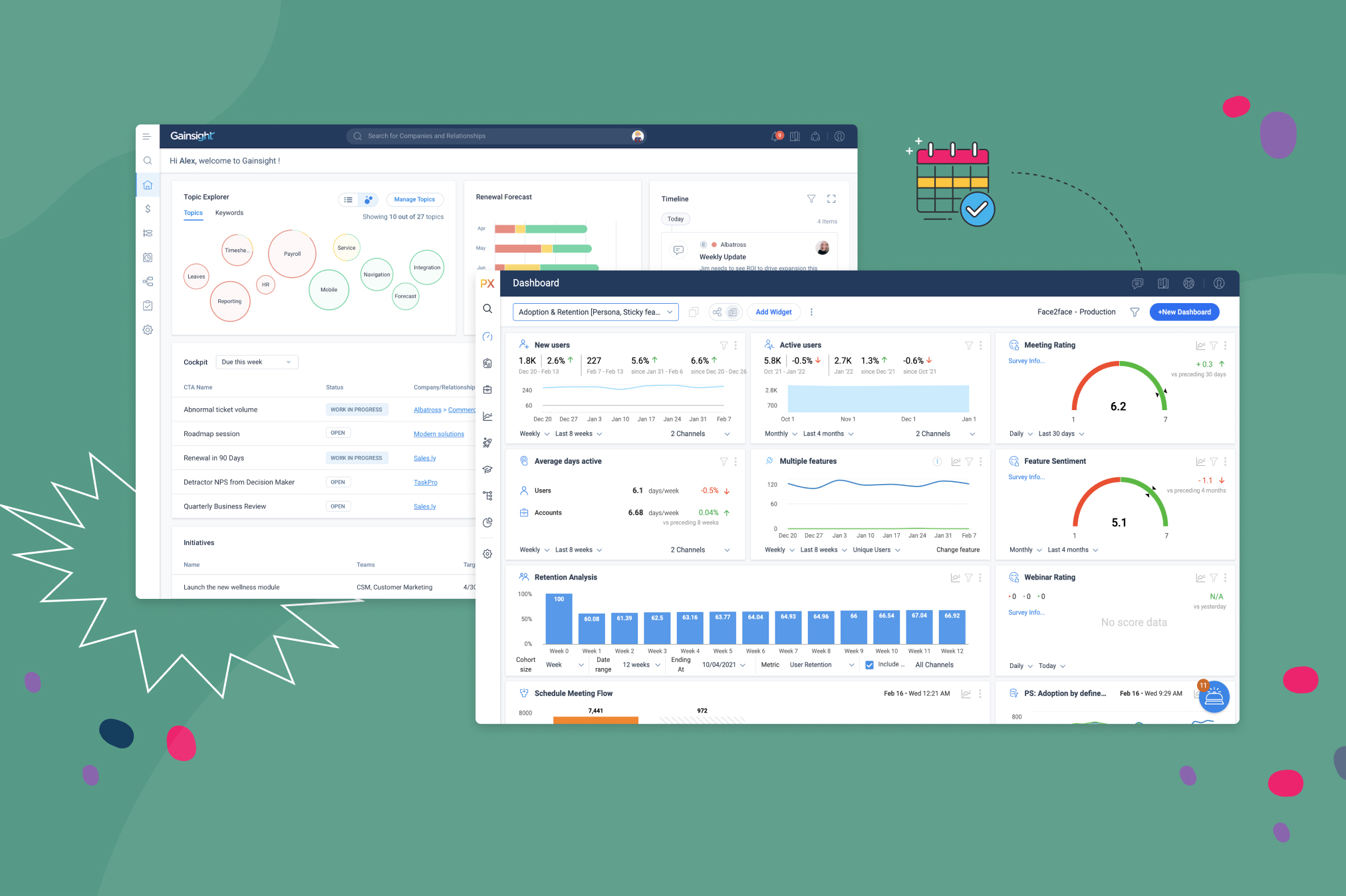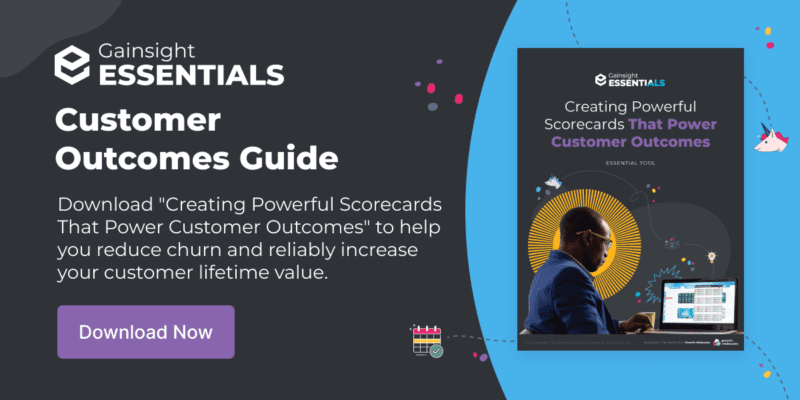By Evan Williams, Customer Success Advisor, Growth Molecules.
One of the most powerful tools in a Customer Success (CS) leaders’ arsenal is a data-driven 360 view of a customer scorecard.
To truly understand where a customer is on their journey, and to be able to proactively identify risk, as well as opportunities for growth and expansion, you must have all essential customer data synthesized and distilled into a single pane of glass.
Which customers are on an aggressive growth trajectory? Which customers have too many support tickets open? Have tickets been aging too long? Which customers are actively leveraging your software? These questions and more can be answered with ease when a customer scorecard and 360 view is implemented in your CS platform.
These powerful insights require data, and this data must be aggregated into a tool that allows for easy digestion of large quantities of data. Gainsight offers native integrations for many popular SaaS platforms that contain this data. For others, the Amazon S3 connector is a powerful tool to pipe in data from nearly any source. This connector allows for the automated upload and consumption of data from a myriad of sources into Gainsight’s data model.
To help you create the most actionable customer health scorecards, we created a list of the most important kinds of data you should be integrating. Here are the top four.
1. Customer Relationship Management Application (CRM)
Your CRM is the backbone of your customer-facing teams. It contains large swaths of data about your customers, sales opportunities, contacts, and communication touchpoints. All of this data populates and enriches the view of each customer page in Gainsight.
This robust integration allows for single direction or bidirectional updates so that changes made to contacts or customers will be automatically reflected in the other system. By integrating data from Salesforce or another CRM, your customer attribute data will be as up-to-date as possible.
2. Product Usage Data
Gleaning customer health from product usage data requires nuance. However, it can be incredibly powerful in identifying at-risk customers, or customers that are thriving, easily and quickly. Work to identify the usage trends and attributes of healthy customers: How often are they logging into your product? What types of actions and interactions should they be taking?
By looking at these data points, it becomes clear when customers are using your tool well, and when they are disengaged. Including this as part of your scorecard strategy allows you to roll this up into overall customer health. Paying attention to these metrics will result in increased revenue from expansion, additional professional services revenue, and reduced churn.
3. Support Tickets and Email
Most organizations implement some form of ticketing system to allow for customer requests and comments, whether that be Zendesk, Salesforce Service Cloud, or another solution. Customer ticketing information is a great indicator of customer health. Does the customer have too many support tickets open? The CSM may want to reach out to propose a success plan. Does the customer have too few support tickets? They may not be using your tool at all. Are the support tickets aging too long? The customer may be frustrated with the lack of progress. All of these indicators can be rolled up into the customer scorecard so that risks can be proactively investigated and remediated.
4. Financial Data
CSMs and renewal managers are challenged with not only negotiating and driving the renewal itself, but also ensuring that they have accurate financial information in their systems to empower them to be successful. Renewal dates, ARR metrics, open invoice information, payment history, etc. are all vital pieces of information when it comes to the transactional responsibilities of CSMs.
Data pulled in from your general ledger system (Quickbooks, Sage Intacct, Netsuite, etc.) can be included alongside all other important customer data for easy access by team members and leaders. Importing financial data into your CS platform will help to identify risk (overdue invoices) and opportunities for growth (increased spend and revenue trends).
More Strategies for Using Your Data
The value of the 360-degree view of a customer that a scorecard provides is immeasurable to CS leaders and individual contributors alike. Calls-to-action (CTAs), can be generated for CSMs so that they can proactively investigate risks and opportunities, rather than approaching them haphazardly. Data points from the four most important types of data: CRM, Product Usage Data, Support Tickets, and Financial data culminate in an overall health score for a customer that can accurately predict the likelihood of a customer to renew and expand. The power of this prediction is that it allows your team to focus their efforts where they are needed most and where they will have the greatest impact.

